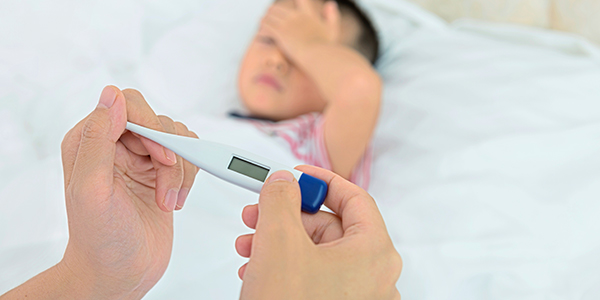Nearly every parent has felt their child’s hot, feverish forehead and gotten worried. Is it serious? How high is too high? Should my child go to the doctor?
Many doctors see concerned parents bring in their feverish children for treatment. When it comes to fever, prompt medical treatment can be very important. However, in most cases, fevers aren’t dangerous and can even be viewed as helpful as they fight infections naturally.
Consider these questions when your child has a fever:
- What’s causing the fever?
- What’s the correct way of taking your child’s temperature?
- When should you use fever reducers?
- When should you take your child to the doctor?










